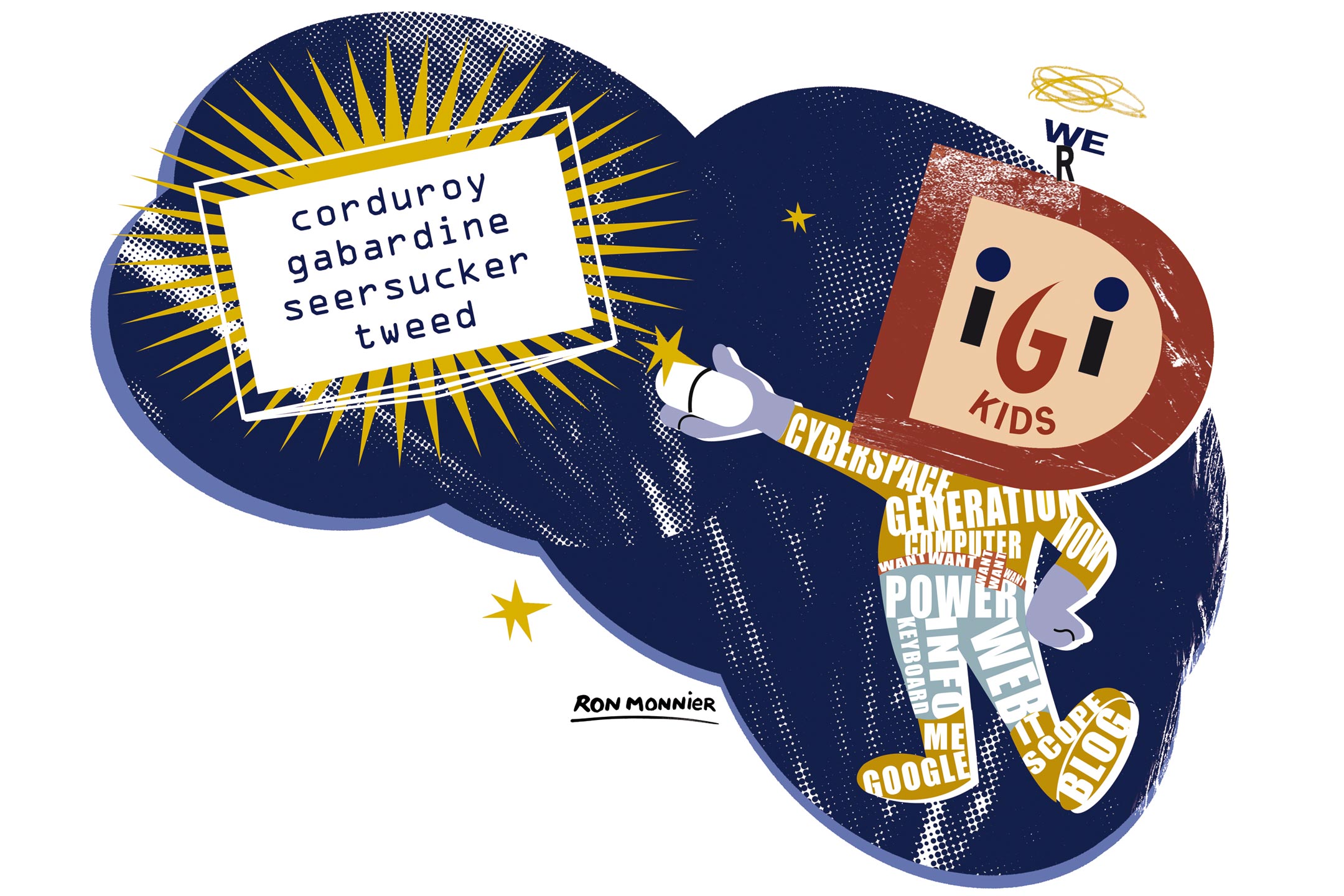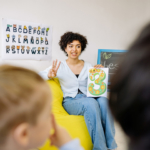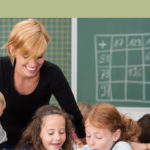
08 May Learning in the digital age: The era of ‘digi-kids’
Ruth Wajnryb explores the latest avenues for learning in the digital age. Dealing with this change is our decade’s big challenge.
“The young people of today love luxury; they have bad manners; they scoff at authority… lack respect for their elders… contradict their parents… eat gluttonously and tyrannise their teachers.”
These oft-quoted lines have been attributed to assorted philosophers and playwrights of ancient Greece, including Socrates, Plato and Aristophanes. While the source of the quote is unclear, its meaning is not, and the words are usually cited to placate those who complain about the antics of today’s young. The idea is to remind parents and teachers that whatever the current gripes with the children in their charge, they’re not unique. Every generation, it is argued, is at odds with the previous generation (their parents) and the next generation (their children).
Such platitudes are offered in good faith. Yet the truth is that this kind of wisdom, drawn from the dusty distance of history, rarely offers practical solace for the vexations of the moment.
At the risk of oversimplifying the issue, generational conflict of the type provoked by the allegedly luxury-loving, disobedient, disrespectful, gluttonous youth is a kind of tug-of-war. One side wants to conserve and perpetuate; the other wants to challenge and innovate. Education researcher Andy Hargreaves calls it “the paradox of ageing” – where “every generation perceives itself as justifiably different from its predecessor but plans as if its successor generation will be the same as them”.
In the past, when the life of the young was not markedly different from how it had been when their parents were young, the paradox of ageing was less of an issue. But with the current pace and scope of social and technological change, it’s no longer good enough to ‘mark time’ in the present. Nowhere is this more relevant than in today’s schools, the meeting place of ‘digital natives’ (those born into the Digital Age) and ‘digital immigrants’ (those who have latterly, if at all, acquired digital literacy).
So, we’re into the era of ‘digi-kids’.
This doesn’t just mean kids tend to play on their computers instead of kicking a ball around. This means that those involved in education need to factor in new variables regarding how literacy might work. The ground and the goalposts have shifted.
Yet this is not happening without protest, which is understandable given that dealing with change is the decade’s big challenge.
The old model of schooling dates from the now-superseded Industrial Age. As knowledge reservoirs, teachers can’t compete with the internet. But if their role has changed, its importance remains firm. Students need to learn new skills: to research, to evaluate information found in cyberspace, to know when a source is trustworthy, to corroborate and to synthesise information harvested from multiple sources.
If we look at one small area in human knowledge—dictionaries—we can see this change in a nutshell. Once, dictionaries were filled only with words evidenced in literary works; sentences from respected (mostly dead) authors were quoted as examples of usage. Now, increased awareness of the variety of registers and dialects means that dictionaries no longer restrict themselves to literary genres of the dominant dialect.
It’s new technology that alerts dictionary compilers to the massively varied language use that is at the hub of daily living. Computer technology has revolutionised our ability to monitor the language. At Collins dictionaries, for instance, a 2.5+ billion-word database of lexical information, the largest of its kind worldwide, continues to monitor the current use of language, screening and scrutinising the language in books, newspapers, magazines, on television, radio, websites and internet blogs. Even advertisements on the inside and outside of buses are monitored. If a word is being used in English anywhere in the world, chances are, sooner rather than later, it’ll be picked up and processed by the Collins database.
Equally, the way in which we use dictionaries and the way children are taught to be dictionary-literate have dramatically changed. There used to be three main reasons for people to open a dictionary: to check the spelling of a word, to check whether a word actually existed, and to check the meaning(s) of a word. Today, with electronic access, spelling has assumed a much weaker profile. Access is now so fast that if you spell it wrong the first time, there’s a good chance that you’ll be prompted to check if you really meant to key in something else (and the ‘correct’ alternative may be offered). The benefit of electronic access is not only the time saved. Just as significant is the lessening of the frustration factor, which is a major reason why many kids (and adults) give up on the printed dictionary at the first hurdle.
Another way in which electronic access to dictionaries at school and home is changing learning is found in the curriculum. For one thing, alphabet skills have far less sway.
For example, the words around ‘tweed’, in the Collins dictionary, such as ‘twee’ and ‘tweenager’, have no connection, beyond alphabetical placement, to ‘tweed’ itself. But consider the words ‘corduroy’, ‘gabardine’ and ‘seersucker’, along with ‘tweed’, and the semantic relationship is immediately apparent. Some expert linguists argue that thesaurus or thematic organisation (the most famous being Roget’s Thesaurus) is more logical.
How do teachers see these matters?
I spoke to two, both very experienced and digitally literate, one at a public school and the other at a private school. The former combines the best of the digital way with the best of the older literacies. He says his kids download his learning activities as fast as he can upload them. Yet, alongside this, he promotes ‘the book’, speaking of the soothing power of narrative, a constant of his career: “children love being read to”.
The other teacher sings the praises of e-learning. She says, “There used to be a lot of moaning and groaning when the children were asked to look something up in the print form, but now they’ll happily use the internet, which means they’ll ask questions about words more readily, which can only be a good thing, in terms of their literacy and learning.” Increased ease in finding words means she can set tasks that build on children’s word knowledge. “For example, we’re studying a novel set in England in the past and we’re doing more work on the language than I would have previously done – looking up words like ‘plimsolls’, ‘pannier’, ‘long johns’. Using the internet has made this speedier, and the children become less frustrated.”
I asked her what it was like before. “I used to spend a lot of time teaching them alphabetising. Small fingers needed to be able to turn the pages to find the right letter. Kids needed to understand how the pages worked – the start and finish words – and how to make sense of the entry once they found it.” She explained that kids would often lose the word on the page, and even if they didn’t, they’d lose interest, as frustration toppled motivation. “Now we can concentrate on understanding the entry, instead of searching for it.”
We’ve long known that language is intimately intertwined with thinking and learning. Electronic access to dictionaries overcomes search frustrations and allows this wonderful resource truly to serve as an adjunct to education. Given that all schooling is now preparation for an uncertain and unpredictable future, whatever supports students in learning how to learn is invaluable.
Dr Wajnryb was an Applied Linguistics scholar and writer who specialised in TESOL – She taught English as a second language – and worked with Australian, American and Japanese universities during her lifetime



